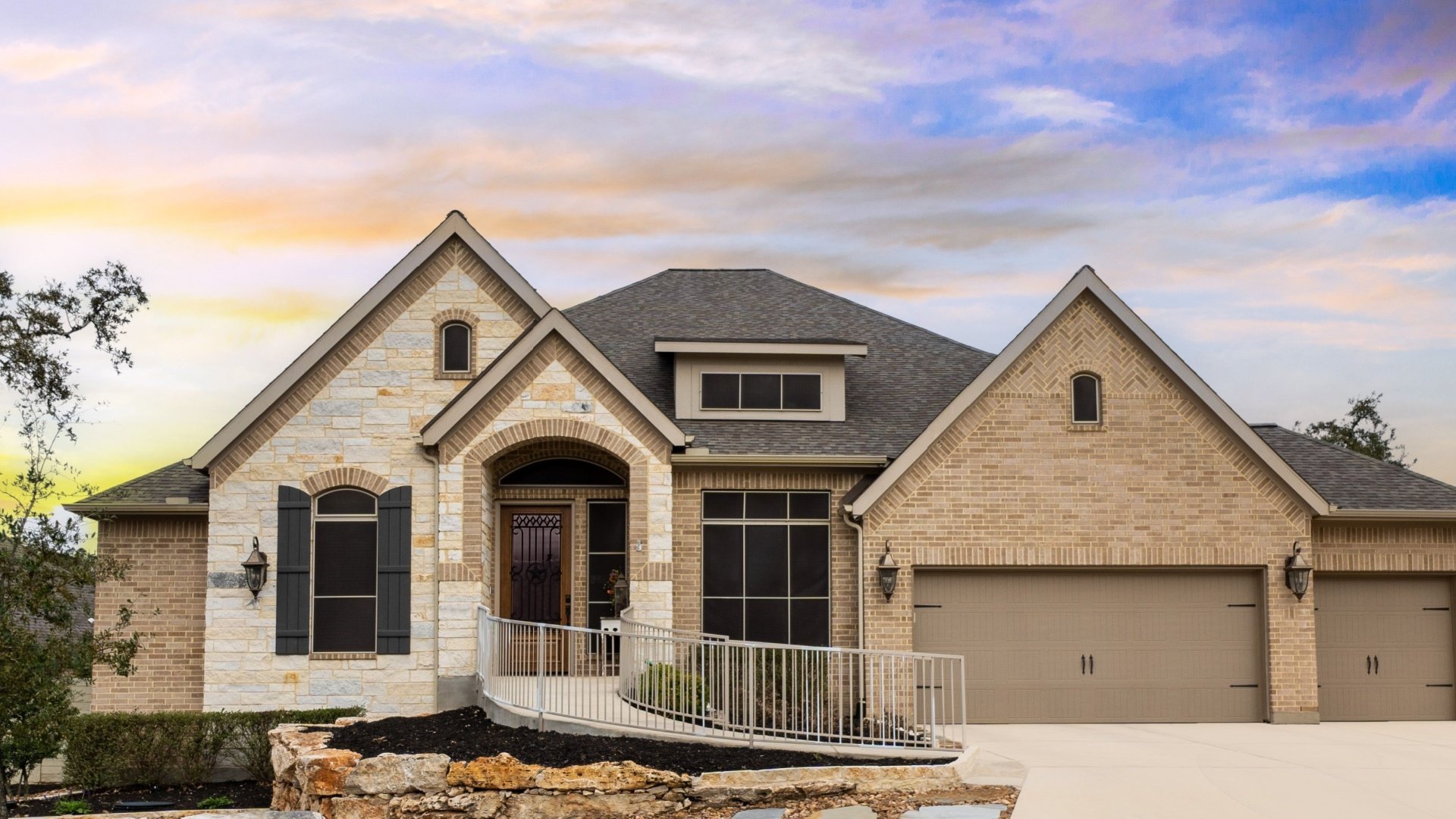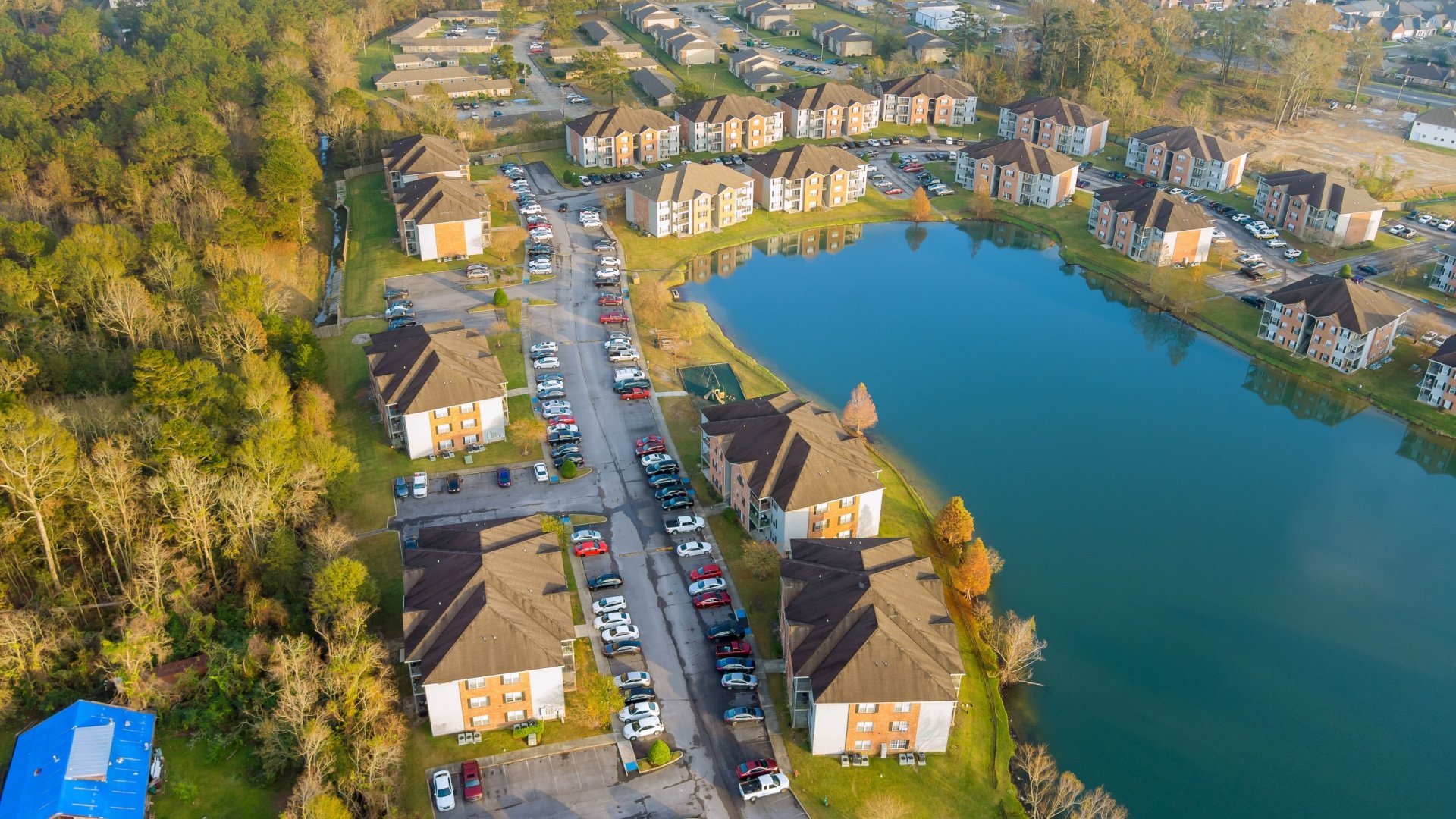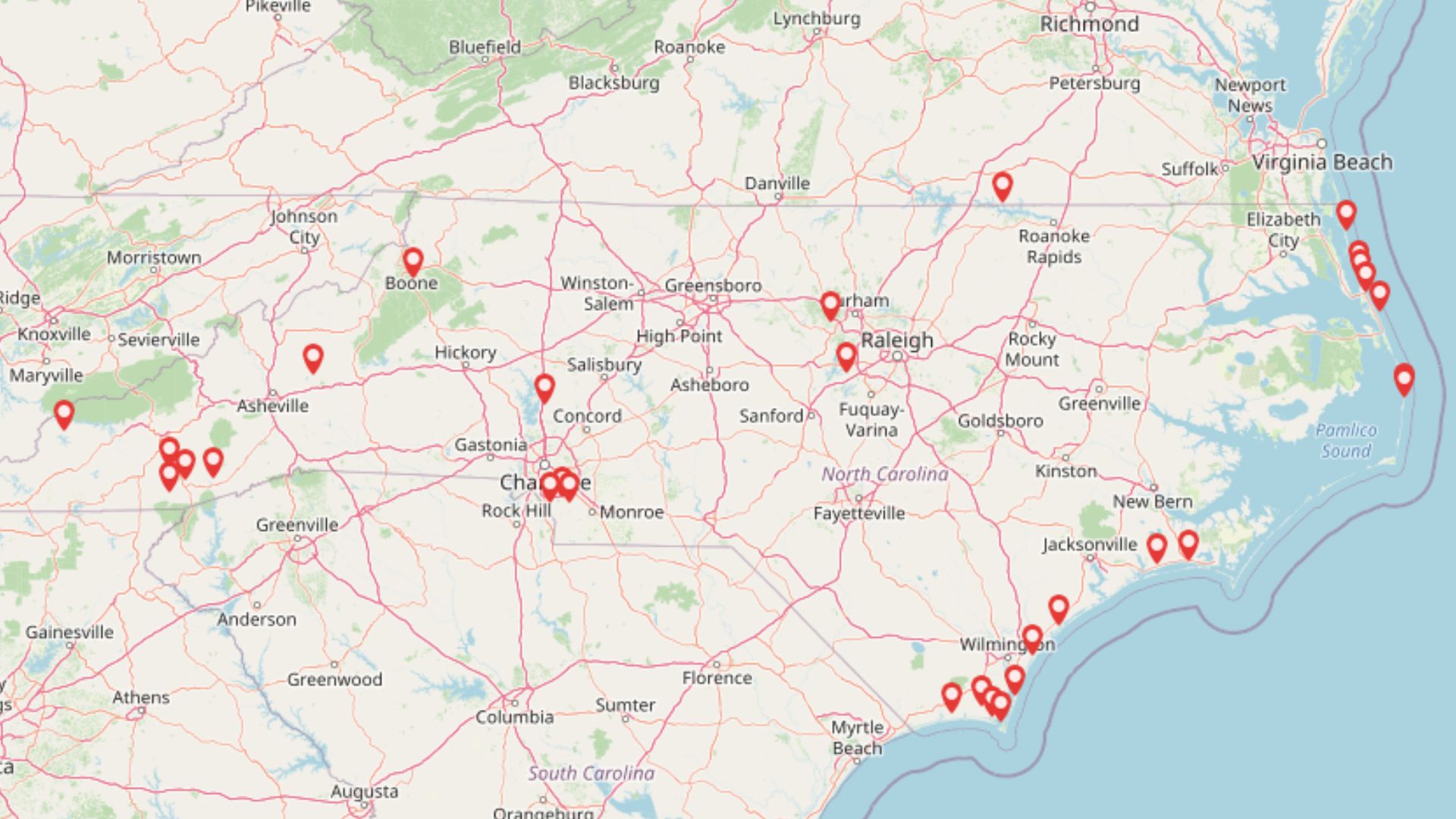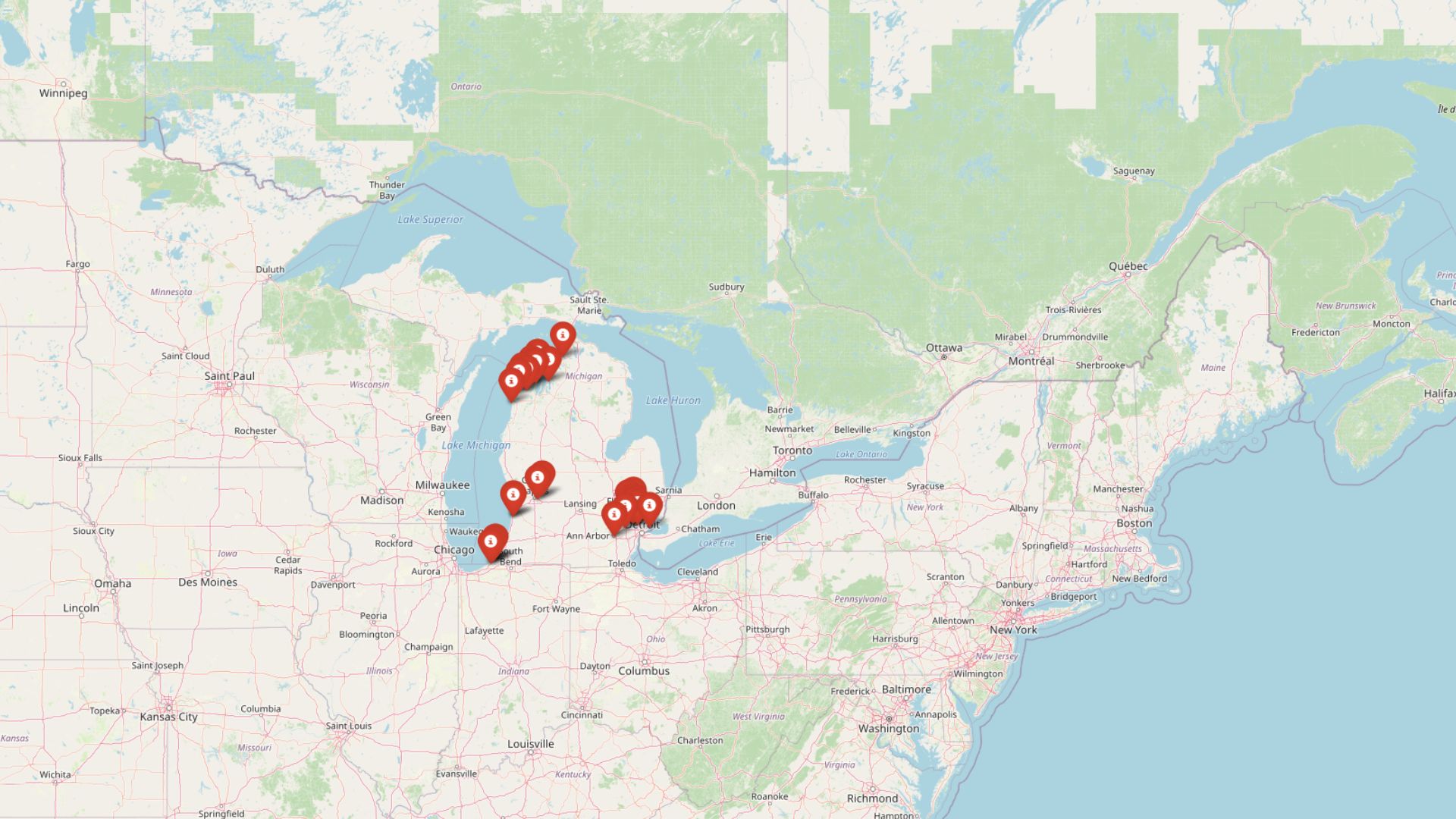The Louisiana housing market has undergone a remarkable transformation over the past five years, with one generation wielding unprecedented influence: Baby Boomers. From the historic neighborhoods of New Orleans to the bayou communities of Acadiana, Boomers have reshaped residential patterns across the Pelican State.
While many anticipated a wave of downsizing as this generation entered retirement, the reality has proven far more complex. With deep cultural roots, financial considerations, and changing lifestyle preferences at play, Louisiana’s Boomers have charted their own course in the housing market. Their decisions—whether to remain in family homes, relocate to more manageable properties, or move closer to healthcare and family—have created ripple effects throughout the state’s economy.
Rising Influence of Boomer Homeowners (2018–2023)

Baby Boomers in Louisiana increasingly own a significant share of the housing stock. Nationally, Americans age 55+ went from owning about 44% of occupied homes in 2008 to 54% by 2023. Louisiana reflects this aging of homeownership: as of 2023, an estimated 36.8% of all owner-occupied households in Louisiana are headed by Baby Boomers, ranking the state 15th in the nation on this metric.
This represents a marked increase in Boomer presence since the late 2000s, when fewer Boomers had reached retirement age. In effect, older Louisianans are now holding onto a larger portion of the housing stock than they did a decade ago. This rise is partly due to Boomers remaining homeowners longer and younger generations entering homeownership later, which has concentrated housing assets with the older generation.
Longer Tenure, Fewer Listings
Notably, homeowner tenure has lengthened: more than half of Boomers nationwide have lived in the same home for 10+ years. In Louisiana, this suggests many Boomers are staying in their long-time residences rather than selling. Fewer existing homes are hitting the market, contributing to tight housing inventory.
Indeed, Boomers’ tendency to stay put is one factor behind the shortage of homes for sale, as empty-nest seniors aren’t freeing up larger houses for younger families. A Redfin analysis found that Baby Boomer “empty nesters” own about 28% of all U.S. houses with three or more bedrooms, roughly double the share owned by millennials with children. This pattern holds in Louisiana’s cities and suburbs, where many spacious family homes remain occupied by aging owners whose children have grown and moved out.
Urban vs. Rural Migration Patterns
Where Louisiana’s Boomers live and move is a mix of both urban and rural trends. Overall, Boomers tend to age in place, but those who do relocate often seek smaller communities or stay within familiar regions.
Rural and Small-Town Appeal
According to national Realtors data, Baby Boomers are more likely than other generations to purchase homes in small towns or rural areas when they do move. In fact, younger Boomers (age 59–68) have been the most likely of any age group to buy in rural areas, and both younger and older Boomers show an above-average preference for small-town living.
This trend is evident in Louisiana: many Boomers have settled in suburban or exurban parts of the state, and some are drawn to rural parishes that offer a quieter retirement lifestyle and lower housing costs. For example, the Northshore communities of St. Tammany Parish (north of Lake Pontchartrain) have become popular with retirees and older adults from the New Orleans area, offering a small-city feel (Covington, Mandeville) and high quality of life. Boomers have contributed to population growth in such areas over the past two decades, a continuation of a long-term post-Katrina shift of residents to higher-ground suburbs.
Urban Retention and Aging
At the same time, major urban centers like New Orleans and Baton Rouge still retain large numbers of Baby Boomers. Some older residents in metro areas choose to stay in the city for convenience, cultural amenities, or access to top-tier healthcare. Others downsized within the city – for instance, moving from a big suburban house to a condominium in New Orleans – but this appears to be relatively uncommon.
More often, urban Boomers are aging in place in the homes they’ve owned for years. In New Orleans, the overall population is getting older as Boomers age up: the median age in the New Orleans metro climbed from 34.8 years in 2000 to 40.0 years by 2023, largely due to the Baby Boomer cohort advancing in age.
This “graying” of the city signals that many Boomers have not left. In fact, New Orleans and Jefferson Parish have seen the share of households with children decline sharply since 2000, while single-person (often older) households grew – a trend consistent with Boomers remaining after their kids move out.
Rural Louisiana’s Two-Sided Story
Rural communities in Louisiana present a two-sided story. On one hand, a number of Boomers have roots in rural parishes and choose to retire there, valuing the familiarity and lower cost of living. National research has long noted that as Boomers retire, many are drawn to areas with natural amenities, warm climates, and affordable housing – and rural Louisiana offers plenty of fishing villages, bayou communities, and quiet country towns that fit the bill.
Some rural parishes (for example, in Acadiana or along the coast) have seen an influx of retirees or second-home owners over the years, as Boomers relocate from cities or other states to enjoy a slower pace of life.
On the other hand, many rural parts of Louisiana are simultaneously aging in place: younger residents have moved out for jobs, leaving a higher concentration of older adults behind. In these areas, Boomers often stay because their homes are paid off and their social networks are local, even as the community around them shrinks.
Over 1.2 million Louisianans live in mostly rural parishes, and the majority of that rural population is minority and elderly. These parishes tend to have a disproportionate share of seniors – in some, over 20% of residents are 65 or older – reflecting that out-migration of youth and aging of long-time residents. As a result, rural Louisiana’s demographic profile is heavily influenced by Boomers who have not moved away.
Net Out-Migration of Seniors
It’s worth noting that Louisiana is not a top destination for out-of-state retiree migration compared to places like Florida or Arizona. In fact, from 2015–2019 the state lost more seniors than it gained: roughly 5,800 older adults left Louisiana annually, while about 4,860 moved in, yielding a net loss of around 1,000 seniors per year.
This net out-migration was most pronounced among the “young-old” (ages 65–74) – likely Boomers relocating to other states for retirement. Some Louisiana Boomers retire to nearby Sun Belt states (Texas, Florida, etc.) with either perceived better amenities or to be closer to adult children.
Those who remain are generally deeply rooted, keeping Louisiana’s overall senior homeownership rate high despite the outflows. The state’s Boomer homeowners are largely staying put in Louisiana, even if a subset departs for out-of-state retirement havens.
Downsizing vs. Staying Put: Are Boomers Moving?

A major question is whether Baby Boomers are downsizing en masse, or mostly staying in place. The data suggest that most are staying put in their current homes as long as they can.
The Preference to Age in Place
In a 2024 survey, more than three-quarters (78%) of Boomer homeowners said they plan to remain in their current residence as they age, rather than move. This “aging in place” intention is by far the most common plan among older homeowners, and it’s clearly playing out in Louisiana where many Boomers have simply not listed their homes for sale.
By contrast, only about 20% of Boomers nationally said they were considering moving to a retirement (55+) community, and even fewer planned to move in with family or enter assisted living in the near future. In Louisiana, these national figures ring true: while some affluent Boomers have transitioned into upscale senior living complexes (for example, communities in the New Orleans and Baton Rouge areas that cater to 55+ adults), they represent a minority. The vast majority are not downsizing or selling their homes on a large scale.
Limited Downsizing Activity
However, some downsizing is occurring on an individual level, especially among Boomers in higher-cost neighborhoods or those seeking a different lifestyle. A number of Baby Boomers in Louisiana have sold large family houses and moved into smaller single-story homes or condos that are easier to maintain in retirement. For example, an empty-nest couple in Baton Rouge might sell their 4-bedroom suburban house and relocate to a 2-bedroom garden home in a 55+ subdivision.
These moves do happen, but often Boomers struggle to find suitable downsized housing within their community. One challenge is financial: after a decade of rising home prices, smaller homes aren’t cheap. As one Boomer put it, “If my house is worth $650,000, I don’t want to spend $1.1 million to downsize” to a newer, smaller place in the same area. This sentiment is common – even those who want to downsize may find it doesn’t make economic sense.
In Louisiana’s more desirable markets, downsizing can actually cost as much as staying, once you factor in prices for new construction, condo association fees, moving costs, and the loss of a low property tax basis or low mortgage rate. Many Boomers also have low mortgage rates locked in from prior years (or no mortgage at all), and selling would mean giving up an ultra-low payment only to face higher rates or rents elsewhere. These factors create strong incentives to stay put.
Low Mobility Rates
In effect, aging in place has become the norm. Louisiana Boomers are defying the old expectation that seniors automatically downsize or move to retirement homes. Instead, many are opting to remain in their communities.
A national HousingWire report even noted that more Louisiana seniors are looking into reverse mortgages to help afford staying in their homes amid rising costs, rather than selling and moving. The end result is that relocation rates among Boomers are relatively low.
According to the U.S. Census Bureau, only about 6.2% of Americans age 65+ move each year, and those who do often move locally. It appears that Louisiana’s Baby Boomers largely mirror that statistic – most have not moved between 2018 and 2023, and those who have tend to migrate within the state or to nearby states rather than undertaking drastic relocations.
Economic and Social Factors Shaping Housing Choices

Several economic and social factors underlie why Louisiana’s Baby Boomers are making the housing decisions they do:
Cost of Living and Tax Advantages
Louisiana offers a relatively affordable cost of living, which encourages Boomers to stay. Housing costs in Louisiana are generally below the U.S. average, making it feasible for retirees on fixed incomes to maintain a home.
Moreover, the state is quite tax-friendly for retirees – it does not tax Social Security benefits or public pensions, and residents 65+ can exclude up to $6,000 of other retirement income from state taxes (rising to $12,000 in 2025). Louisiana also has one of the lowest property tax rates in the nation (around 0.5% effective rate), which means seniors do not face the large annual property tax bills that plague homeowners in some other states.
These policies reduce the financial pressure to relocate. A Boomer who might be driven out of a high-tax state can afford to remain in Louisiana. Even sales taxes, while high, exempt essentials like groceries, softening the impact on those with tight budgets. All told, Louisiana’s low overall cost structure makes staying in one’s paid-off home economically sensible for many Boomers.
Rising Insurance and Utility Costs
On the flip side, some cost factors are pushing Boomers to reconsider their housing. Notably, homeowners insurance costs have skyrocketed in Louisiana in recent years due to hurricanes and insurer pull-outs. Louisiana now has the second-highest home insurance premiums in the U.S. for retirees, averaging about $6,560 annually – which gobbles up 24% of the average Louisiana retiree’s income.
This is a huge expense on a fixed income, and it’s forcing some senior homeowners to downsize or move to avoid the insurance burden. There have been cases of longtime New Orleans homeowners, for example, reluctantly selling because they can no longer afford the post-hurricane insurance premiums on their property.
Similarly, high summer utility bills (air conditioning in Louisiana’s heat) and maintenance costs for older homes factor into some Boomers’ decisions to seek a smaller, more energy-efficient residence. While cost of living is low in many respects, these rising housing-related costs put pressure on those with modest retirement incomes.
Healthcare Access Challenges
Access to quality healthcare is a crucial consideration for aging Boomers. Louisiana’s healthcare infrastructure is uneven – the larger cities have major hospitals and specialists, whereas many rural areas face provider shortages. In fact, 73% of Louisiana residents live in areas with a shortage of health professionals, and rural parishes often lack nearby medical services.
For older adults, this can be a life-or-death issue. As Boomers develop more healthcare needs in their 70s, some are relocating closer to hospitals and doctors, typically meaning a move into urban centers or regional hubs. For example, a Boomer couple from a very rural parish might move to Baton Rouge to be nearer to Baton Rouge General and Our Lady of the Lake hospitals as they age.
Conversely, Boomers already in metro areas may choose to remain there rather than retire to a remote location, precisely because they want the reassurance of accessible healthcare. The pandemic underscored this – many seniors felt safer staying put, near known providers, rather than moving to unfamiliar areas.
Thus, the urban/rural split in Boomer migration is partly driven by healthcare availability: rural Boomers with serious health needs often head toward cities, while healthier or more independent Boomers feel comfortable in rural or small-town settings.
Family and Social Networks
Social factors also guide Boomer moves. Many Louisiana Boomers have close family networks, and decisions often revolve around proximity to children and grandchildren. Those with family in-state might stay nearby (or even move closer to them within Louisiana), whereas those whose children have settled elsewhere might eventually relocate out-of-state to be near the grandkids.
In surveys, wanting to be closer to family is a top reason Boomers do move. We see this in Louisiana when, for instance, a New Orleans couple retires and moves to Dallas or Atlanta because that’s where their adult children live.
On the other hand, a strong attachment to hometown communities keeps many Boomers in place – especially in Louisiana, where cultural roots run deep. Lifelong residents of a parish may be reluctant to leave their church, friends, and routine, even if practical factors suggest moving. This loyalty to community often outweighs other considerations.
Retirement Community Options

The availability of retirement living options can attract some movers. Louisiana has a number of 55+ and continuing care retirement communities (CCRCs), such as those in the New Orleans metro and Northshore area, which appeal to Boomers seeking an active lifestyle with support services.
About 1 in 5 Boomers nationally say they’re considering a 55+ community, and Louisiana developers have taken note – building patio home communities, active adult apartments, and senior living campuses to cater to this generation. Economic factors like the low cost of real estate in Louisiana make these retirement communities more affordable than similar communities in pricier states.
Still, only a minority of Boomers ultimately choose this route. Many more prefer to remain in ordinary housing. Louisiana’s retirement communities have grown, but they tend to draw those Boomers who have the means and desire for a resort-like retirement experience (golf, clubhouse, etc.), rather than the average homeowner.
Natural Disasters and Climate Concerns
Finally, environmental factors can’t be ignored. Hurricanes Katrina (2005), Rita (2005), Laura (2020), Ida (2021) and others had significant impacts on where people live. Some Baby Boomers permanently relocated after these storms – for example, thousands of New Orleans Boomers never returned after Katrina, reshaping the population map.
In 2018–2023, events like the devastating 2020–21 hurricane seasons and rising flood insurance premiums played into decisions as well. A Boomer whose home flooded multiple times may decide to resettle inland. Climate resilience is increasingly a concern: some coastal Boomers are moving to northern Louisiana or out of state to avoid repeated storm recovery in their old age.
Those who stay often retrofit their homes (e.g. installing generators, elevating houses) or have a strong support system that gives them confidence. Louisiana’s generous homestead exemption and insurance incentive programs help some seniors rebuild and remain. But overall, climate risks and insurance costs are gradually pushing some Boomers to relocate to safer areas, a trend likely to grow in coming years.
Changes from the 2008–2018 Era
When comparing the late 2010s–early 2020s to the previous decade, we see a continuation – and amplification – of existing trends.
Unfulfilled Predictions
Between 2008 and 2018, Baby Boomers were just beginning to retire in large numbers (the first Boomers hit 65 in 2011). Many analysts back then predicted a “silver tsunami” of housing turnover as Boomers downsized or moved to retirement states, but that wave never quite materialized at the expected scale.
Instead, even in 2008–2018, a significant portion of Boomers stayed in their homes through the Great Recession and recovery. In Louisiana, the sluggish economy and housing bust in the late 2000s likely discouraged moves – some Boomers couldn’t sell their homes easily or saw depressed values, so they postponed relocation. By the mid-2010s, as the housing market recovered, a trickle of downsizing began, but many Boomers still clung to their family homes.
Solidified Stay-Put Behavior
Fast forward to 2018–2023, and those tentative patterns have solidified into firm behavior: Boomers are even more inclined to age in place now than a decade ago. The difference is striking in the numbers – the share of homes owned by seniors jumped roughly 10 percentage points higher in 2023 than it was in 2008, indicating fewer of those homes turned over to younger owners than one might have expected.
In the 2010s, Louisiana did see some Boomer relocation – for example, a number of older New Orleanians moved to the Northshore suburbs or out-of-state around 2010–2015. But from 2018 onward, the trend of staying put became dominant, reinforced by circumstances like the COVID-19 pandemic (which prompted many to avoid moving or entering communal living).
Indeed, 2020 saw a spike in retirements – 3.2 million Boomers nationwide retired that year (versus ~2 million in a typical recent year) – yet those retirees largely did not trigger a big downsizing sell-off. Instead, they stayed in place through the pandemic, benefiting from rising home equity but not cashing out.
Changing Market Conditions
Another change from the prior decade is housing market conditions. In 2008–2012, home prices were down and inventory was higher, so if a Boomer wanted to move, there were options (though they might sell low). In 2018–2022, home prices in Louisiana rose steadily (the median price climbed about 5%+ annually), and inventory hit historic lows.
This made it a seller’s market but a tough buyer’s market – a paradox for downsizers, who could sell their big house at a premium but then struggled to find an affordable smaller home to buy. Many opted not to bother. High prices and, from 2022 on, high interest rates created a “lock-in effect”: Boomers with low-rate mortgages were disinclined to move and take on new loans at 7% or higher.
Contrast this to the early 2010s when rates were falling and it might have been easier to finance a move. Thus, the economic landscape post-2018 further incentivized staying put, more so than in the previous decade.
Evolving Migration Patterns
In terms of migration patterns, Louisiana has long experienced out-migration of younger people and only modest in-migration of retirees. That general pattern held in both 2008–2018 and 2018–2023.
One notable shift: the late 2010s and early 2020s have seen slightly more net loss of older residents from Louisiana, as noted earlier (about -1,000 seniors per year). During 2008–2018, some of Louisiana’s Boomers were in their 50s and still working; by 2018–2023, more were fully retired, and a subset took the opportunity to relocate out-of-state. The net effect isn’t huge but does mark a continuation of population stagnation in Louisiana.
Meanwhile, within the state, the patterns of Boomer settlement (urban vs. rural) have remained consistent, with perhaps a greater tilt now toward suburban/small-town living than before. Realtors report that younger Boomers in the late 2010s were the most likely of any generation to buy homes in small towns and rural areas – an indicator that, compared to the early 2000s, Boomers today are more open to living outside big cities.
In the early 2010s, some Boomers were still leading a resurgence in downtown living (e.g. moving into New Orleans condos in the post-Katrina rebirth). By the 2020s, the pendulum swung towards spread-out living, aided by better telecommunications and the appeal of having space during COVID times.
Conclusion
The 2018–2023 period in Louisiana has been characterized by Baby Boomers largely staying put, continuing a trend from the prior decade but in an even more pronounced way. Those who do move tend to do so for specific reasons (family, health, better housing fit) and often remain within Louisiana or the region.
Economic factors (home equity, interest rates, taxes) and personal preferences (familiarity, community ties) have led most Boomers to resist mass downsizing or migration. Compared to 2008–2018, Boomers today hold a larger slice of Louisiana’s housing, are less likely to budge from their long-held homes, and when they move, are favoring smaller communities over urban centers.
These trends will have lasting impacts on Louisiana’s housing market – influencing everything from housing availability for younger buyers to the development of senior-friendly amenities – as the Baby Boomers continue to age through their 70s and 80s in the coming decade.
References
- Baby Boomer-Dominant Housing Markets [2024] – Construction Coverage
- More Than Three-Quarters of Baby Boomers Plan to Stay In Their Home As They Grow Older – Redfin (2024)
- 2024 Home Buyers and Sellers Generational Trends Report – National Association of Realtors
- Domestic Migration of Older Americans: 2015–2019 – U.S. Census Bureau (2022)
- Who Lives in New Orleans and Metro Parishes Now? – The Data Center (2024)
- Louisiana’s Rural Health Care Anemic for Minorities, Poor, Elderly – Louisiana Illuminator (2022)
- ‘Everything has gone up’: Retirees feel burdened by inflation as home insurance costs surge – Stacker/KTVZ (2024)
- Louisiana Tax Guide for Retirees – Kiplinger (2023)
- Many Baby Boomers Own Homes That Are Too Big. Can They Be Enticed to Sell Them? – NPR (2024)
- Census Bureau Releases Report on Older Americans’ Moving Patterns – U.S. Census Bureau
- Louisiana Housing Market: House Prices & Trends – Redfin
- New Orleans Widow Forced to Sell ‘Forever Home’ as Soaring Insurance Outpaces Retirement Budget – Moneywise
- Louisiana homeowners insurance costs lead more seniors to reverse mortgages – HousingWire
- Baby Boom Migration Tilts Toward Rural America – Economic Research Service






